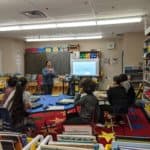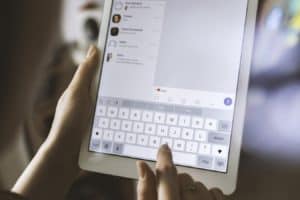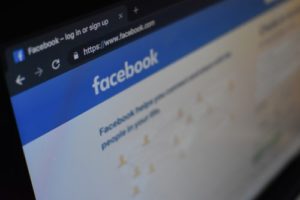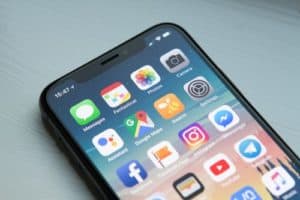Section Navigation
Introduction
Students will learn how to find credible sources online and develop critical thinking skills. It is important to think about sources and assess whether they are reliable or not. The internet is full of information that is not always credible and is sometimes biased.
Learning Goals
By the end of the module students will be able to determine if a source is reliable or not. They will know how to check facts and find good sources of information. This is an important skill for any project that involves research.
Vocabulary
Critical Literacy - the ability to take apart various texts to find any possible discrimination based on the author’s personal and political views.
Credible - able to be believed or reliable.
Bias - prejudice in favor or against something, unfairly based on personal opinions.
Hoax - something done with the intention of humorous or malicious deception.
Propaganda - biased or misleading information used to promote a specific political cause or point of view.
Fake News - a type of propaganda that includes deliberate misinformation or hoaxes.
Guiding Questions
- Have you ever read information online and believed it only to find out later that it wasn’t real?
- Do you know how to determine if information online is true or not?
Curriculum Links
Critical literacy links to the English curriculum and and Media Studies. Students need to be able to filter through the information they come across and determine if it is credible or not. Critical literacy and fact-checking are important skills that are needed to perform successful research on any subject.
Materials
- Projector
- Speakers
Non-Computer Activity
Play Two Truths and a Lie
Go around in a circle, and each student shares two things about themself that are true, and one thing that is false. They can share them in any order, and then the class tries to guess which one is the lie. Once everyone has had a turn, lead an open discussion about different strategies, and what made the lies believable and the truths unbelievable.
Computer Activity
For this module students will explore sites to determine if they are reliable or not. They will look at hoax sites, propaganda, biased information, and sites with inaccurate information.
Activity 1
Watch the video on “Liquid Mountaineering”. Lead the group in a discussion about the credibility of the video. Do they believe it or not? What information do they have to support their opinion? Does the video seem like a reliable source? Why or why not?
After the discussion, reveal that the video is a hoax: Liquid Mountaineering Campaign a Hoax
Activity 2
You can’t believe everything you see and read on the internet. Just like “Liquid Mountaineering”, there are websites that look reliable or contain believable information, but are not reliable. To help determine if a site is a good source of information, use the WWW model:
- Who wrote it and what credentials do they have?
- Why was it written?
- When was it written or updated?
Evaluate your answers to these questions to determine if a site is a credible source of information. If in doubt, seek out other sources that support the site’s claims.
As a class explore the site about the AFDB: Aluminum Foil Deflector Beanie. Use the WWW model to determine whether the site is a reliable source or not. See if the students can determine that this is a hoax site. If they have trouble deciding, review the following definitions and then come back to determine what kind of site this is.
- Hoax sites contain made-up or inaccurate content created for humorous or malicious intent.
- Propaganda is information that is biased or misleading in nature, usually used to promote a specific political cause or point of view, or spread ideas.
- Bias is being in favour or against something or someone, typically in a way that is seen as unfair and is based on personal opinion rather than fact. News sites can be biased towards a political party and their views.
- gTLDs are Generic Top Level Domains. They are the ending of the website domain, and tell you what kind of a site you are looking at. Students should pay attention to what gTLD is used, to help determine if a site is reliable or not. Generally speaking, .edu and .ca domains are more trusted than .aab or .wzd, for instance. The Spamhaus Project
- Bad facts can be found on sites where the writers are not reliable, qualified or haven’t fact-checked before publishing.
Fact-checking is an important critical thinking skill to develop to help determine whether sources are credible or not. Start by finding a claim made by the site in question, and find several other sources that support that claim. If the site lists any references, check to see if they exist, and if it is credible using the WWW model. For the AFDB site, for example, students could research whether mind reading is an actual phenomenon, and if aluminum foil would prevent it, as the website states.
Common gTLDs
- .com is the most popular and is used for many websites. Be cautious and critical when getting information from these sites.
- .net originally used for network sites, but widely available, so again, be cautious and critical of information from these sites.
- .gov sites are restricted to government use only. These sites are often a good source for statistical data.
- .org was originally for organizations and non-profits. Be careful of biased information that supports the views of the organization on these sites.
- .edu is generally used by universities and other formal education institutions. These sites tend to publish research through universities.
- .com.co is a common ending to find for sites that are fake versions of real sites. Avoid information found on these sites.
Conclusion
Have students partner up and explore the following sites. Using the WWW model students will try and determine if the sites are a reliable source or not. For unreliable sites, students will then determine if it is a hoax, propaganda, biased, or contains bad information. For reliable sites, students will fact-check the information with other sources. International Society for Technology in Education (ISTE) has a list of fact-checking sites that students can use.
Hoax Sites
- All About Explorers
- Dihydrogen Monoxide Research Division (DMRD)
- Save The Pacific Northwest Tree Octopus
- The Jackalope Conspiracy
- Dog Island Free Forever
Propaganda/Biased Sites
Misinformed Sites
Resources
- Simple Fake News Quiz to see if you’ve been fooled (a handy checklist of things to look out for).
- Edutopia has an article about how to evaluate websites as information sources using the WWWDOT model.
- Edugains (PDF) has a document on critical literacy that includes why to teach it, and how.
- The Capacity Building Series (PDF) done by the Ministry of Ontario has a monograph on critical literacy that includes strategies for students.
- The Learning Exchange has information on critical literacy and includes a social justice aspect and how social media has changed the way we consume information.
- Education World has a guide for teaching source credibility. It has information on determining if a site is a good source, the roots of fake news, as well as fun activities.
- Abacus Data has survey results that show the prevalence of fake news in Canadian media. It has charts that show the bias based on political parties and examines specific news channels.
- The University of Wisconsin has a page that gives details on how to tell if a site is credible.
- Childnet has teacher resources for teaching critical literacy while online called Trust Me.
- BBC has a page for teachers that includes lessons and resources to help students spot false news.
- Education Technology and Mobile Learning has a poster that outlines the questions critical thinkers ask when examining information.
- Education Technology and Mobile Learning has a great infographic on how to spot fake news which can be downloaded as a pdf and printed.
- We Are Teachers has an article on teaching readers how to recognize bias and how it relates to fake news.
- False, Misleading, Clickbait-y, and/or Satirical “News” Sources is a document that has a list of sources that students could further explore.




